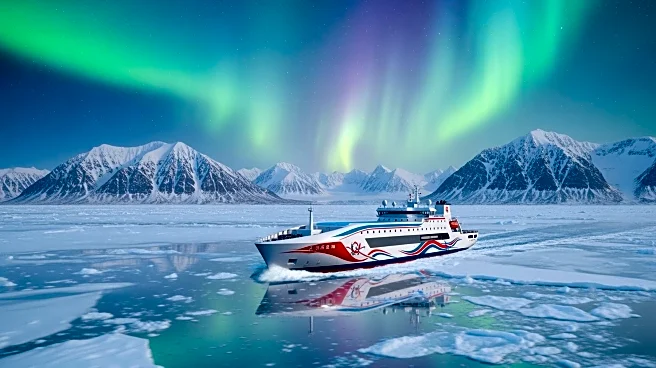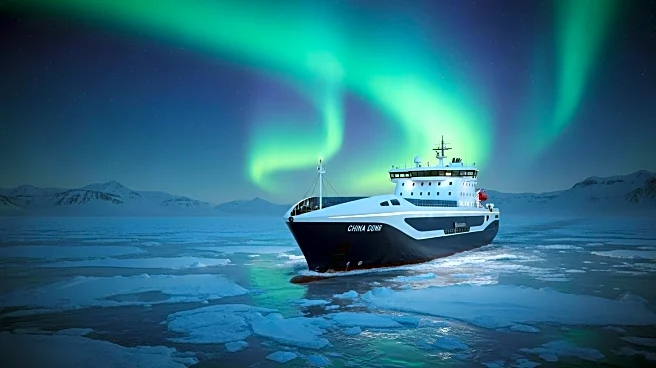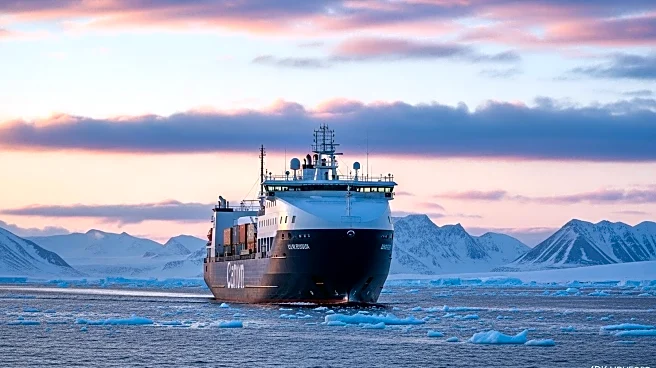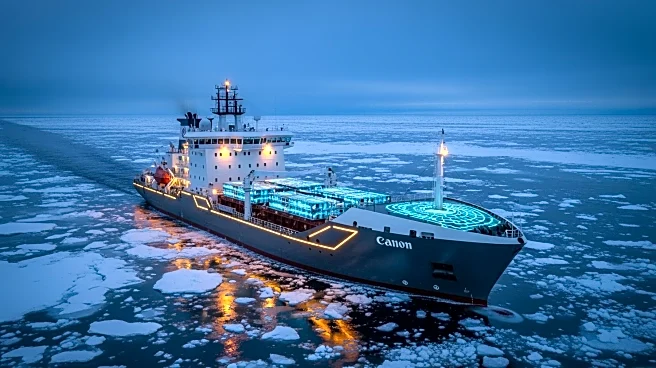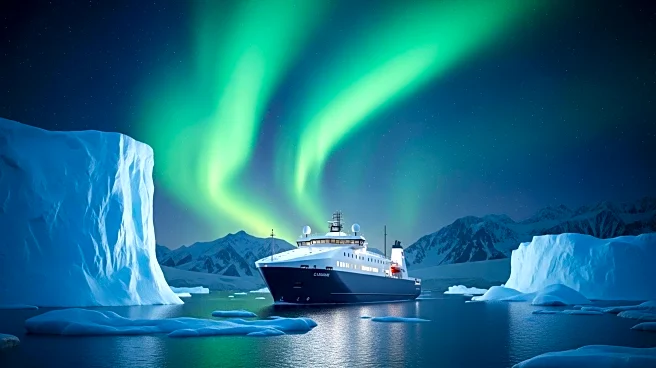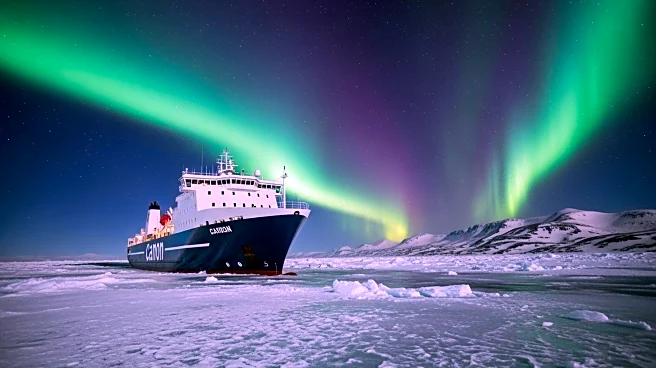What's Happening?
A Chinese container ship has successfully completed its maiden voyage through the Arctic, reaching a UK port and cutting transit time for goods destined for Europe. The Istanbul Bridge's journey, initially
expected to take 18 days, was delayed by a storm but still arrived earlier than traditional routes through the Suez Canal or Cape of Good Hope. This new Northern Sea Route, made possible by global warming, runs through Arctic waters within Russia's exclusive economic zone. China is exploring faster maritime links with Europe amidst a costly trade war with the United States.
Why It's Important?
The development of the Arctic route represents a strategic shift in global shipping, offering China a faster and potentially more cost-effective path to European markets. This move could reduce China's reliance on traditional shipping lanes like the Strait of Malacca, diversifying its export strategies. The Arctic route's viability is a direct consequence of climate change, highlighting the environmental impact on global trade patterns. As China seeks to sustain economic growth, this new route could enhance its competitive edge in international trade, particularly as exports to Europe rise while shipments to the U.S. decline.
What's Next?
China's successful Arctic voyage may encourage further exploration and investment in this route, potentially leading to increased maritime cooperation with Russia. As the Arctic continues to warm, more shipping companies might consider this path, altering global logistics and trade dynamics. The U.S. may need to reassess its trade strategies in response to China's evolving export routes, particularly as trade tensions persist. The environmental implications of increased Arctic shipping will likely prompt discussions on sustainable practices and international regulations.
Beyond the Headlines
The Arctic route's emergence underscores the profound impact of climate change on global commerce, raising ethical and environmental considerations. The reduction in sea ice opens new opportunities for trade but also poses risks to fragile ecosystems. The geopolitical dimensions of Arctic shipping could lead to increased international competition and cooperation, as nations navigate the balance between economic interests and environmental stewardship.
